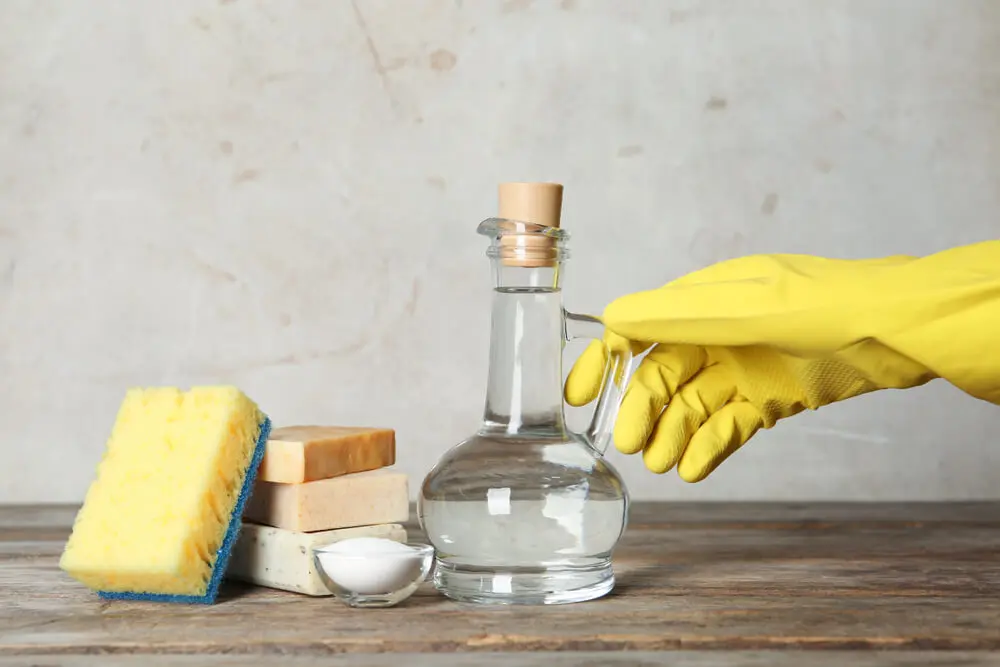How to Polish Granite Surfaces

Processed granite surfaces stand out among the most used materials for interior and exterior decoration due to their elegance and resistance. However, the hardness of these rocks does not exempt them from wear and tear. That’s why cleaning and polishing granite surfaces is a commitment to keep them in optimal condition.
Granite is constantly rubbed, which results in almost permanent maintenance depending on whether it is a countertop, a floor, or a wall. The way in which you perform this task is decisive in the appearance of the stone.
To polish it, you can hire the services of specialized companies. However, the expense involved in paying third parties leads many to try simple remedies because they’re less expensive, faster, and – in some cases – very effective.
Granite qualities for different surfaces

Granites are plutonic igneous rocks that come from small and medium-large grains. This is explained by the General Directorate of Mining Development, highlighting among its characteristics the palette of colors offered by the mineral. The range includes variations of the following tones:
- Gray
- Pink
- Green
- White
- Yellow
According to what was pointed out by the institution, these stones are dimensional, so they allow for specific cuts and shapes. Hence, they’re often used as substitutes for ceramic, glass, concrete, and other elements in construction.
Granite also stands out for its versatility to adapt to any environment due to its impermeable quality, its porosity, and its ample durability. Due to these particularities, granite can be used in kitchen countertops, pool area floors, bathroom walls, and other rooms.
We think you may be interested in reading this, too: What Is “Cleanliness” and How Can You Apply it to Your Home?
How to polish granite surfaces
There are special machines that polish granite, but these procedures are appropriate for professional hands. Other methods that polish these surfaces are the following.
Mops and polishers
Both threaded mops and domestic electric polishers are suggested to polish granite, especially after the application of polishing products.
In the case of machines, they have discs with the appropriate textures to return the natural shine to the stone. The rags or mops are used in manual work, mainly in walls covered with the rock.
Polishes
Perhaps this is the most obvious alternative. These are waxes or liquids for stone surfaces. They’re very easy to apply, and promise top finishes. The composition of these products concentrates a neutral pH; in addition, they are non-toxic.
Generally, the polishes are made with acrylic and natural resins, friendly with the material and that contributes to its resistance. Simply place small amounts on the space to be polished and then rub them with kitchen paper.
The Consumers and Users Organization recommends the use of kitchen paper in the cleaning of surfaces to prevent the transfer of microorganisms contained in the textiles.
Neutral soap
Soap solutions represent a very easy and feasible remedy for polishing granite. In addition, liquid soap is listed among the least toxic and most economical cleaning products.
The trick is to scrub the surface with an emulsion containing water and neutral soap, making sure that the second ingredient exceeds the first one in quantity. Remember to rinse with more water at the end of the soaping.
White vinegar and petroleum jelly

Petroleum jelly is a purified mixture obtained by the distillation of petroleum. The Clínica Universidad de Navarra delves into the medical benefits of this substance, especially in the dermatological area. Although studies that demonstrate its effects in other areas are unknown, empirical references associate this product with the elimination of grease and dust.
On the other hand, there is research on the disinfectant properties of vinegar or acetic acid, which catalog it as a powerful antimicrobial in domestic washing activities.
The homemade recipe suggests mixing a tablespoon of petroleum jelly with a splash of white vinegar. Distribute the preparation on the surface and with kitchen paper make circular movements to obtain a nice shine.
Degreasers and detergents
Degreasers and detergents diluted in warm water are particularly advantageous for polishing granite in exteriors, such as facades, patios, and gardens. While degreasers remove oils and inhibit corrosion, detergents contain surfactants to dissolve and remove grease in water and other soiling.
Combine both ingredients in a bucket with plenty of water; the quantities will be determined by the space to be polished. Then, disperse the liquid with a broom and then remove it with water.
Try to work with a hose that increases the pressure of the rinsing; this works better if you close the procedure by polishing with a polish for exterior granite.
Bleach
A report disclosed by the Universidad Nacional a Distancia notes that sodium hypochlorite, the chemical name of bleach, is an oxidant with disinfectant, fungicide, and bactericide capacities. On the other hand, it’s believed that this resource is useful for polishing granite.
During its use, it’s indicated to wear gloves and a mask in order to prevent damage to the skin and not to inhale the product. It’s up to you whether your use paper or wool cloth, instruments that you will soak to polish the surface. Afterward, wash with plenty of water, and don’t forget to dry the granite after rinsing the chemical.
Like this article? You may also like to read: How to Clean Reusable Water Bottles and How Often to Clean Them
The importance of cleaning before polishing granite surfaces
It’s normal that the frequent use of the surfaces leaves stains and other dirt. That said, not cleaning them immediately makes the removal of impurities more laborious. You will get the granite to shine faster and in all its splendor if you comply with the respective cleaning before applying the polishing tricks.
Architectural Digest magazine recommends water as the best product for the maintenance of these surfaces. Meanwhile, it’s a good idea to deepen hygiene one day a week with other substances – for example, soap solutions.
In the specific case of kitchen countertops, daily cleaning with disinfectant is essential, since this is where food preparation is carried out and carelessness can result in cross-contamination and health conditions.
What you should not do when polishing granite surfaces
For the sanitization of granite surfaces and their subsequent polishing to show good results, it’s essential not to apply abrasive substances, nor use green fiber mops or metal brushes. It’s necessary to rub gently, preferably with kitchen paper or microfiber cloths.
Although warm water is best to remove strong stains, be careful not to boil it, since in the long term, it tends to tarnish the material. Very cold water has the same effect.
All cited sources were thoroughly reviewed by our team to ensure their quality, reliability, currency, and validity. The bibliography of this article was considered reliable and of academic or scientific accuracy.
- Barragán Del Rey S. Cómo limpiar y desinfectar la encimera de la cocina sin dañarla. Architectural Digest. España; 2020. https://www.revistaad.es/espacios/cocinas/articulos/como-limpiar-desinfectar-encimera-cocina-sin-danarla/25575
- ¿Cómo mantener buena higiene en la cocina? Organización de Consumidores y Usuarios. España; 2022. https://www.ocu.org/alimentacion/seguridad-alimentaria/consejos/consejos-higiene-cocina
- Detergente. Green Facts. https://www.greenfacts.org/es/glosario/def/detergente.htm
- Fernández Hernando P. ¿Por qué blanquea la lejía? Universidad Nacional a Distancia. España; 2012. http://contenidosdigitales.uned.es/fez/view/intecca:VideoCMAV-5a6f48b1b1111f510e8b5109
- Perfil de mercado del granito. Dirección General de Desarrollo Minero. México; 2018. https://www.gob.mx/cms/uploads/attachment/file/419273/Perfil_Granito_2018__T_.pdf
- Productos de limpieza, higiene y desinfección. Healthy Children. American Academy of Pediatrics. Estados Unidos; 2019. https://www.healthychildren.org/Spanish/health-issues/conditions/prevention/Paginas/cleaners-sanitizers-disinfectants.aspx
- Vaselina (vía tópica). Clínica Universidad de Navarra. España. https://www.cun.es/enfermedades-tratamientos/medicamentos/vaselina-via-topica
- Zinn M, Bockmühl D. ¿La abuela sabía mejor? Evaluación de la eficacia antibacteriana, antifúngica y antiviral del ácido acético para procedimientos de atención domiciliaria. BMC Microbiology. Vol. 20. Reino Unido; https://www.ncbi.nlm.nih.gov/pmc/articles/PMC7447605/
This text is provided for informational purposes only and does not replace consultation with a professional. If in doubt, consult your specialist.








